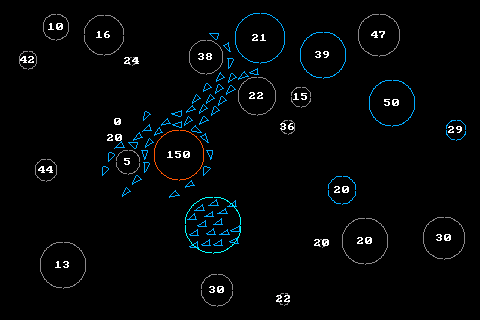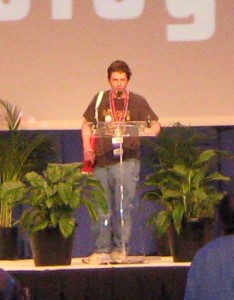iGalcon – port of Galcon to the iphone – part 1
June 14th, 2008I’m going to blog a bit about my experience porting Galcon to the iphone. It’s not overly python related, so I won’t send all these posts to the python planets. Maybe just a couple. Anyway, if you’re interested, keep an eye on my blog.
There is a chance I’ll use tinypy in iGalcon, but I haven’t really decided on that yet. There isn’t a large need for scripting at this point, but if one comes up, I might just do that. To start, I’ve takened the main flocking engine in Galcon, re-factored it a bit, and built a 100% C / SDL mini version of Galcon at the res I will be rendering it on the iphone. I decided to do this, so I could be sure that the core engine was working perfectly in C before I complicated the matter by trying to run it using the apple tools.
So far so good 🙂 It took me about 6 hours to get this mini version of Galcon up and running in SDL. Most of the code I was able to grab from the original Galcon. I did a small amount of reorganizing to make things cleaner.
One of the requirements for iphone development is for your app to be able to be closed and opened and have the app recover to its previous state. At least, that’s the ideal. I adjusted my C structures so that they include no pointers, only ID numbers, so I should be able to write the game state to a file and reload it and have everything back. The full game state is around 32k, so I think that will work.
On the iphone side of things, it took me several hours to get all my certs set up so I could work with the dev environment. I was able to build their example app this morning. Here’s to hoping the rest goes smoothly 🙂








